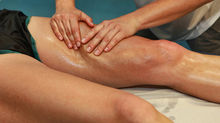Wicked things our bones do
- The Studio Team
- Jan 30
- 3 min read
Updated: Feb 21
It's time to try defying gravity
I think I'll try defying gravity
And you can't pull me down
But what if it was good for us to pull you down? And what if our Studio Strong classes were exactly what you needed to pull you down safely? Add a bit of extra “gravity” so to say? And what if after every class your bones sang: “Together, we’re unlimited” … ok, enough of that, on with the show.
Every seven to ten years adults will have made themselves an entirely new skeleton, whilst for children it is every two1. This is AMAZING and shows how dynamic our skeletal system is! But how does this happen? In the merry old land of Oz, there are three main workers:
Osteoblasts: the builder, whose job it is to create new bone cells. These cells are particularly active when we are children whilst our skeleton is growing vertically.2
Osteoclasts: the excavator, whose job it is to break down our skeleton when it is time to be repaired or renewed.2
Osteocytes: our mature bone cells, who comprise 90-95% of our total bone cell number. Osteoblasts create osteocytes.3
We reach our peak bone density in our late 20s and until the age of approximately our mid 30s, the ratio of how busy our osteoblasts to our osteoclasts are is approximately equal. This equilibrium of bone cells means that for this period of time, our bone density is the most stable it will be for our life. From our late 30s onwards though, our osteoclasts become a bit too busy, and as a result our skeleton’s bone density begins to reduce.
Our body is constantly juggling how “expensive” different parts of us are. Things that are essential are our organs, nervous system, blood etc. – these parts will always have energy spent on them, regardless of their cost. Things that are viewed as “discretionary items”, and therefore only have energy spent on them if they are being well utilised, are things like our bones and muscles. If our body never deems our bones and muscles a priority, it will “cut costs” and reduce energy spent on them. When there is less investment in our skeleton, our bone density suffers. The first stage of this is called osteopoenia, which can progress to osteoporosis. When our muscle mass drops to a critical level, we call this sarcopoenia.
Whilst there are no pain or symptoms of either osteoporosis or sarcopoenia, they can have very severe health consequences. Osteoporosis is estimated to effect around ¼ of postmenopausal women4 and is attributed to around 51% of total female fractures5. Whilst these numbers are lower in men, 6% and 24% respectively, they are still significant. In community dwelling older people, sarcopoenia is a major risk factor for all-cause mortality.6
As Elphaba says: “Some things I cannot change, but 'til I try I'll never know.”
Strength training, ideally 2-3x/week has been shown to increase regional bone mineral density, or at a minimum, slow the degree of bone loss per year.7 For a strength training protocol to be effective, it must be dynamic, progressively exceed threshold intensity, and impose unusual loading patterns on bones7 … Which every single Studio Strong class will provide for you. By lifting weights, our muscles (which attach to our bones via their tendons) pull on the bone and as a result, the body will deem it “worth the energy” to add some more bone in that general area. All of a sudden, the cost of increasing bone density is worth paying.
It's never too late to start your journey to Strong … strong bones, strong muscle and a strong start to 2025. Our classes are varied, progressive and run at various times throughout the week to provide options.
All levels including beginners and pro’s welcome! Get ready to feel that good, productive and life giving burn, we’ll see you there soon!

Royal Osteoporosis Society. (Accessed 2025, January 2023). Age and bone strength.
https://theros.org.uk/information-and-support/osteoporosis/causes/age-and-bone-strength/
Teitelbaum S. L. (2007). Osteoclasts: what do they do and how do they do it?. The American journal of pathology, 170(2), 427–435. https://doi.org/10.2353/ajpath.2007.060834
Schaffler MB, Kennedy OD. Osteocyte signaling in bone. Curr Osteoporos Rep. 2012 Jun;10(2):118-25. doi: 10.1007/s11914-012-0105-4. PMID: 22552701; PMCID: PMC3366431.
(2023, August 15). Estimating the prevalence of osteoporosis in Australia. Australian Institute of Health and Welfare. https://www.aihw.gov.au/reports/chronic-musculoskeletal-conditions/estimating-the-prevalence-of-osteoporosis-in-austr/summary
Metcalfe D. The pathophysiology of osteoporotic hip fracture. Mcgill J Med. 2008 Jan;11(1):51-7. PMID: 18523524; PMCID: PMC2322920.
Liu, P., Hao, Q., Hai, S., Wang, H., Cao, L., & Dong, B. (2017). Sarcopenia as a predictor of all-cause mortality among community-dwelling older people: a systematic review and meta-analysis. Maturitas, 103, 16-22.
Going, S. B., & Laudermilk, M. (2009). Osteoporosis and strength training. American journal of lifestyle medicine, 3(4), 310-319.





























Comments